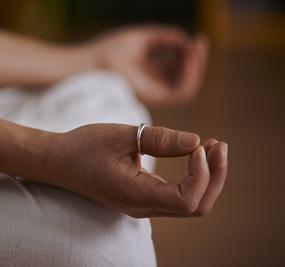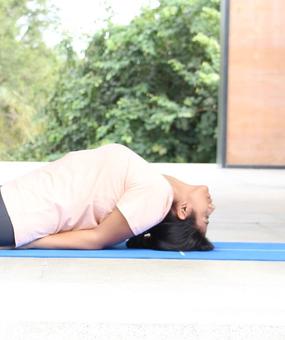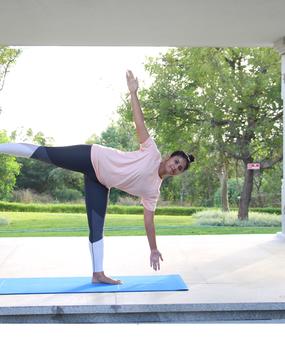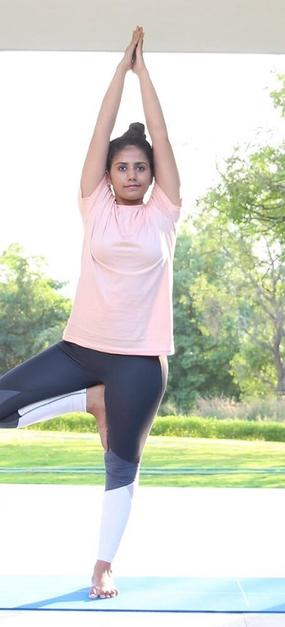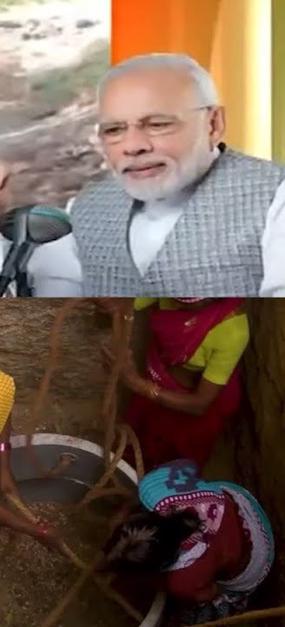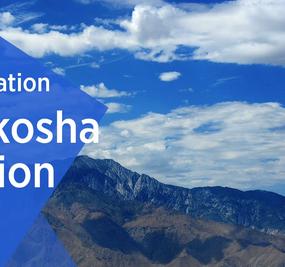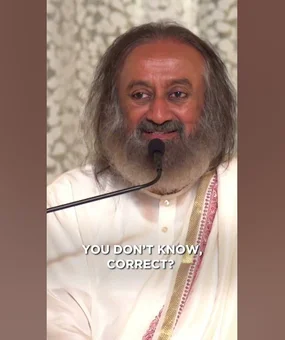Namaste, two hands folded in a welcome greeting, is the salutation that Indians are globally welcomed with. Literal meaning – ‘I salute the divinity in you’, the gesture is being widely appropriated as the greeting of choice in post-COVID times. However, there is a hidden power in this gesture and we can tap into it by learning more about Namaste, or the Anjali Mudra.

There are several definitions of the word ‘Mudra’ and they change depending on which culture you’re seeing it in. However, the meaning that can be used interchangeably for mudras and Anjali Mudra in specific is how Shaivism sees this gesture. According to Shaivism, mudras are considered a reflection of the self. These gestures belong to the self and also come out of it, allowing their practitioner to go back to the self.
Mudras are not just a gesture or a sign. When we are exercising, only one area of our body is being worked upon. But, when we do a mudra, it acts as a seal or bond which brings our whole body in alignment with the energy associated with the mudra. Anjali in Sanskrit means an offering to the divine. And, when we practice the Anjali Mudra, we gain several subtle benefits from it which bring us closer to divinity.
How to do Anjali Mudra?
Anjali Mudra is the easiest mudra to learn as every child is taught this gesture since the time they could consciously learn how to fold hands. When used in Yoga, doing this mudra means bringing both the palms together in front of the heart chakra, with the fingers pointing upwards. The hands need to be pressed evenly and firmly together.
Every Surya Namaskar starts with the practitioner bringing their hands in Anjali Mudra. However, there is a way to practice this mudra properly.
- First, sit in a comfortable position. You can sit on a chair, cushion, or in a sukhasana.
- Keep your spine relaxed and lengthened. You can even tuck your chin in to stretch it.
- Then, slowly bring your hands together in front of your heart chakra, the Anahata chakra. When you do this, your awareness is being directed to your heart, letting energy flow from other points of your body to the heart center.
- Although it is not needed to close your eyes. But, if you do so then you can be even more aware of the energy flowing to the center of your chest.
- Relax after taking a few deep breaths and keep your hands on your lap.
- Repeat this process a few times. It is said that when we fold our hands together, we are bringing both the hemispheres of our brain in alignment with each other. We derive logical and reasoning faculties by our left brain and creativity from our right brain. By bringing both brains together via this mudra, we also bring together intuition and logic, feminine and masculine, and the strength and sensitive energies of our being.
- Every time you bring your hands together, feel the two different aspects of your energy coming together in balance and harmony.
- After this, you can also use this posture to bring more energy to your heart. Touch the thumbs to the sternum of your chest lightly. Arch your shoulder blades a little to open up the chest more.
- The elbows should be in line with your fingers. This change will take minimal effort but the experience of balance would be greatly heightened.
While you are doing the Anjali Mudra, it is important to be aware of the sensations that happen when you bring your palms together. Doing it slowly can make it easier for you to feel the vibrations. As you do it several times, notice the change in vibrations, and see if the experience changes after repeated practice.
Benefits of Anjali Mudra
Globally, the Namaste gesture is practiced fondly because it is one sign that can exhibit greeting, humility, and gratitude simultaneously. And, the one doing it will also experience the same feeling of groundedness and humility. This is the first benefit of Anjali Mudra, allowing you to internalize the external experience of humility and groundedness.
Some other benefits of the mudra include:
- The coming together of both hemispheres of our brain when we do the Anjali Mudra channelizes our thought process temporarily. You can feel your mind experiencing positive thoughts during the practice.
- Slow breathing during the process of Anjali Mudra and its connection to the heart improves the circulation of oxygen in the blood. It also balances the breathing pattern, calming an agitated mind instantly.
- At the midpoint of our brain hemispheres lies the pituitary gland, which is considered the seat of intuition. Bringing your hands together not only balances the working of the adrenal and pituitary glands, but it also gives a jolt to your intuitive capabilities.
- Bringing together of brain hemispheres improves their coordination and functioning.
- Practicing Anjali Mudra regularly brings more awareness, enhances concentration, and calms the mind thereby relieving stress.
- Physically it improves flexibility of the arm joints and wrists.
- Aside from stimulating the Anahata chakra , the regular practice of Anjali Mudra is seen to stimulate the Ajna chakra as well. Anahata Chakra is located in the center of our chest and it’s stimulation helps us deal with our emotions in a better way. Ajna Chakra is located in the middle of the eyebrows and is the concentration center of our body. Stimulating it increases our focus and memory prowess.

The human fingers are associated with the five elements that make up the entire creation. Thumb is Agni (fire), the index finger is Vayu (air), the middle finger is Aakash (space), the ring finger is Prithvi (earth), and the little finger is Jal (water). When we bring the hands together in Anjali Mudra, we also activate the elements in our bodies. When practiced regularly, these elements and all the tissues and organs associated with them also come in a balanced state.
It is a wonder that a gesture so simple could have such deep significance and impact on our body-mind complex. But, just a few minutes of daily practice of Anjali Mudra can have far-reaching subtle and gross benefits for you.
You can find out more such beneficial mudras, yoga poses, lively bhajans, and soothing meditations by Gurudev Sri Sri Ravi Shankar on the Art of Living app.
We’d love to hear from you
Leave your comments @artofliving





